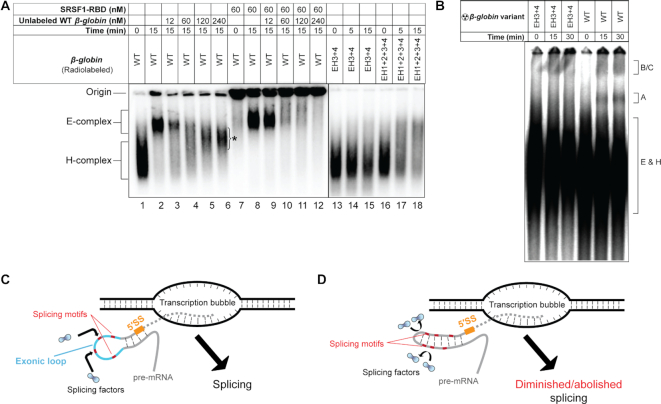Figure 7.
Importance of exonic loops immediately upstream of the 5′-SS for assembly of the early spliceosome. (A) Comparison of E-complex assembly with 10 pM radiolabeled β-globin pre-incubated with SRSF1 in the presence or the absence of 12 nM untreated unlabeled competitor β-globin (compare lanes 3 and 9); E-complex assembly assay performed with β-globin EH3+4 and EH1+2+3+4 mutants (lanes 13–18); an asterisk indicates undefined pre-mRNA complexes; nuclear extract from the same preparation is used in all experiments. (B) Spliceosomal complex (A, B/C) assembly assay with β-globin WT and its EH3+4 mutant. (C, D) Schematics depicting the role of exonic secondary structure in spliceosome assembly; a pre-mRNA in the process of being released from the transcription bubble is shown; solid grey lines indicate exons and dotted grey lines intron; orange line indicates 5′-SS, cyan line the exonic loop(s) immediately upstream of the 5′-SS, and short red lines putative splicing motifs. In case of splicing competent introns, the exonic segment immediately upstream of the 5′-SS contain single-stranded segments, which promote recruitment of appropriate splicing factors for splicing. Stems in place of exonic loops either occlude the splicing motifs within or provide steric hindrance to recruitment of a splicing factor at nearby sites or both, thus diminishing splicing.

